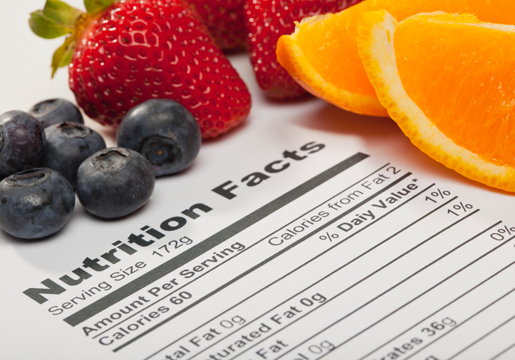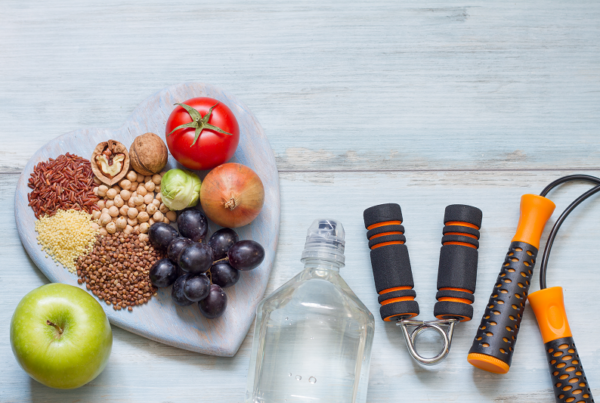
I’m frequently being asked questions about nutrition that lead me to believe that many people do not know how to read food labels properly. In order to understand the information on packaged products do not go by what is says on the front of the item. We need to go to the back or side where nutritional information and list of ingredients can be thoroughly scanned and understood. Manufacturers know that consumers are more health conscious than ever so they want you to believe their product is healthier than other similar options by making health claims that are often totally misleading. Research shows that this strategy does affect consumer’s choices, often luring them into purchasing less healthy options.
Choosing healthy food and drink is so important, obviously the best way to avoid being misled by these labels is to avoid processed foods altogether. Ideally the majority of our purchases shouldn’t be processed or packaged as we aim to buy fresh, whole food from the fresh veg aisle and local butchers and fishmongers. Whole food doesn’t need an ingredients list as the whole food is the ingredient! From a practical point of view I know this is not possible but you can still get really healthy shopping by knowing how to separate the junk from the quality products.
Here are the most important things to read and understand on each food label:
Check serving size
Often the nutritional information is based on a particular serving size. This is often a smaller than average weight that is not in line with how much people eat. This makes the information therefore misleading and unrealistic. It is important to check the number of servings in the box or packet and work out the calories and nutrients based on half, quarter, third, what portion of it you intend to have each time. Alternatively look at the amount per 100 grams as this is also stated on every list. This is usually displayed on the front of the product as well making it easier to compare foods quickly. The ingredients list tells you the most about the product, this is displayed in descending order so you can see what exactly is in each item.
Total and Saturated Fat
Below the calories you will find the amount of total fat and then the fat of which saturates. These are very important numbers to understand. On total fat, low is 3 grams or less (per 100 grams). High total fat is more than 17.5 grams (per 100 grams). We need a certain amount of fat in our diet as it is a source of energy and to help with absorption of certain important vitamins, however eating too much can lead to a wide range of health challenges. The more important number is the amount of fat of which saturates on the next line down, aim for low saturated fat which is 1.5 grams or less per 100 grams or 100 mls, high is more than 5 grams per 100 grams. Aim to keep saturated fat down as excess causes problems and can lead to clogged arteries which can cause strokes and heart attacks. Trans (hydrogenated) fats should be avoided if possible, as it raises your LDL (bad) cholesterol, puts stress on the organs and can increase your risk of coronary heart disease as it fights good cholesterol (check ingredients list for this). The best fats are unsaturated, poly and monounsaturated. Be careful of products that claim to be low fat or fat free as this does not mean calorie free. Often these products contain high amounts of added sugar to make the food tastier so compare the total calories first.
Salt and Sodium
Salt is made up of sodium and chloride. It’s the sodium part that can be bad for your health. A small amount of sodium is needed to help certain organs and fluids work properly. However, most of us consume far too much of it as it’s hidden in so many processed foods. 75% of our salt intake comes from the processed foods we eat every day. Adding table salt means you’re taking in even more sodium which can increase your risk of high blood pressure, a risk factor for heart disease. It is recommended that adults keep salt intake to 4 grams or less per day. That equates to 1600 mg of sodium. The calculation for converting salt to sodium is 1 gram salt = 400 mg sodium. For grams to grams multiply the grams of salt by 0.4. If you are looking at the nutritional content on the label it’s easy to again look at the per 100 grams column. If it lists sodium look for foods with less than 120mg per 100g which is considered low, for salt look for 3 grams or less.
Fibre/Dietary fibre
This is a nutrient we want more of, not only does it help with digestion and gut health but has many other health benefits especially if combined with a low fat, low sugar, low salt diet. This includes a reduced risk of heart disease, type 2 diabetes, colon cancer, diverticulosis and weight gain. Fibre comes in two forms, insoluble and soluble. They do different things so aim to get a mixture of both. Ideally aim for a total of 30 grams per day. On a food label high fibre is 6 grams or more per 100 grams. Low fibre is 3 grams or less per 100 grams.
Carbohydrates/Sugars
Carbohydrates give us energy to keep going, all carbohydrates break down into glucose which the body can use as an energy source or store in the liver or muscles for later. Carbohydrates are a total of starch, fibre, sugar and sugar alcohols and there is vast difference in their make-up. The best carbohydrates to incorporate into your diet are nutrient dense, limiting those that have sugars added during processing. Dietary fibre does not raise blood sugar so the higher the amount the better, this can be subtracted from total carbs to find out net carbs. Sugar alcohols are sweeteners that usually end in the letters ‘ol’ like sorbitol, maltitol, xylitol. They affect blood glucose half as much as ordinary carbohydrates. When looking at a food label check the total carbohydrates, but more importantly the number below named carbs of which sugar. The ideal here is less than 5 grams per 100 grams. Always check the ingredients list to see if sugar is listed as an ingredient, if in the top three this is a high sugar product, best avoided. It can be in the form of sugar, high fructose corn syrup, fruit syrup, maple syrup, concentrate, dextrose, maltose or agave. These are used to boost flavour and preserve packaged foods and beverages. Women should have less than 24 grams of sugar per day, men a maximum of 36 grams. Too much sugar causes dental cavities, weight gain and elevated triglycerides (fat in the blood).
If not listed here the sugar is natural and a better choice. Natural sugars are an important part of a healthy diet, found in fruit, milk, vegetables and some grains. The shorter the ingredient list the better, if it is long and complex it is likely to be a highly processed, less healthy option.



